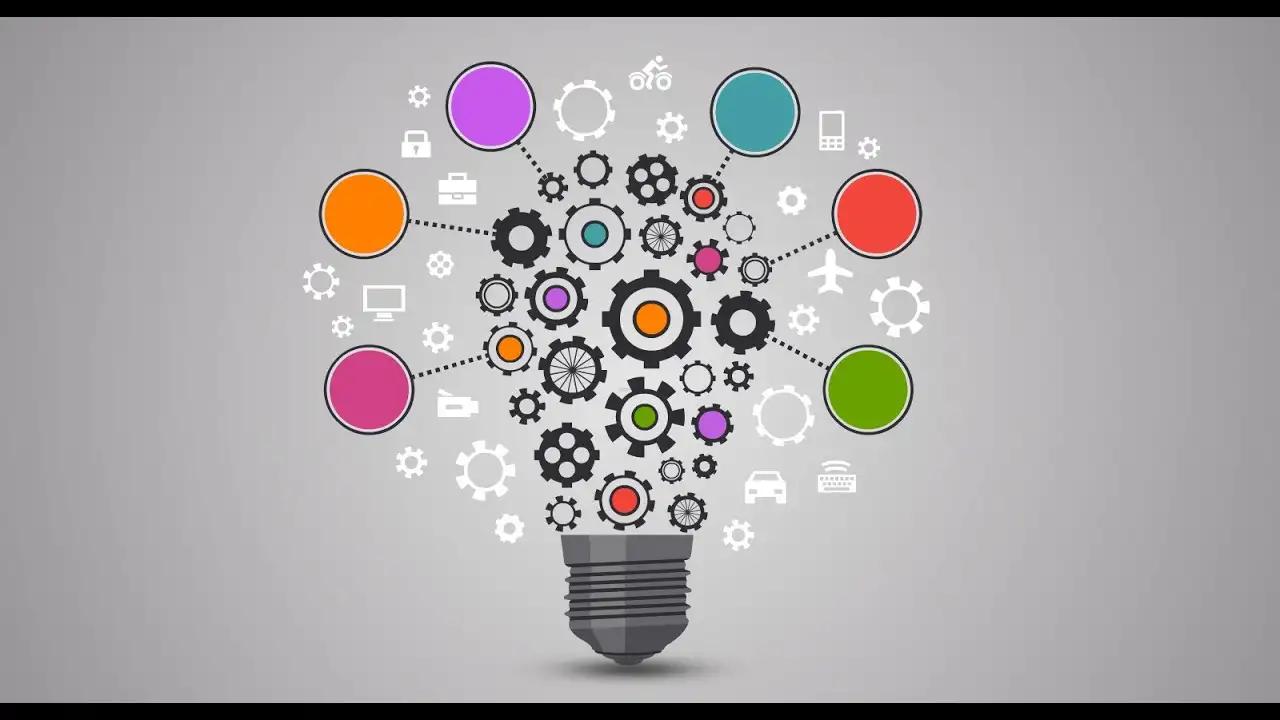Ladies and gentlemen, gather ’round as we peel back the curtain on the captivating world of Canonicalization – the mystical process that’s revolutionizing the way we handle Duplicate Content Management. Unraveling the threads that bind the fabric of this fascinating topic, we’ll explore the whispers of its inner workings, revealing the elusive ‘Secret Sauce’ that ensnares the digital realm. Strap in, for we’re about to embark on a mysterious journey through the twisted labyrinth of canonical URLs, page rankings, and SEO best practices. So, if you’re ready to crack the code on this enigmatic enchantment known as Canonicalization, let the adventure begin!
Table of Contents
- – The Science Behind Duplicate Content Detection: Understanding the Algorithm at Play
- – Identifying and Handling Duplicate Content: Crucial Steps towards Optimization
- – Canonical Tags: Mastering the Art of Directing Traffic to Authoritative Sources
- – Beyond Technical Barriers: Strategies for Non-Tech Savvy Marketers
- Q&A
- Future Outlook

– The Science Behind Duplicate Content Detection: Understanding the Algorithm at Play
The key to how duplicate content management systems (detection and prevention tools) operate lies in the science behind canonicalization. This concept, although often misunderstood, is the backbone of the algorithms used to identify and handle duplicate content. In this post, we’ll delve into the curious world of canonicalization and explore its importance in the context of duplicate content detection. So, let’s get started!
When it comes to managing duplicate content, canonicalization plays a critical role. It normalizes various web pages into a standardized format, allowing bots and algorithms to identify how closely connected they are. This process involves trimming irrelevant information, such as:
– Unnecessary whitespace
– Comments, ads, and other irrelevant elements
– CSS and JavaScript code
The primary goal of canonicalization is to focus on the core content of the web page, thus enabling more accurate comparisons between them. By doing so, it helps in identifying:
– Identical content posted on different locations or at different times
– Subtly-different versions of a single piece of content, such as how a blog post might appear across different devices or platforms
For instance, consider a blog post that’s been duplicated across multiple locations. Canonicalization would help in recognizing these duplicates, preventing them from negatively impacting search rankings and ensuring a cohesive online presence.
To further illustrate the power of canonicalization, let’s take a look at an example:
– Original Web Page: “**My Amazing Blog Post: 2022 Edition**”
– Duplicate Web Page: “**Duplicate: My Amazing Blog Post: 2022 Edition**”
Without canonicalization, these two pages would be considered distinct entities, even though they share the same core content. On the other hand, when applied, canonicalization would render them identical, thus signaling their duplicity.
In conclusion, the science behind duplicate content detection relies heavily on canonicalization. By normalizing web pages and focusing on their core content, we can ensure more accurate identification and management of duplicate content, ultimately leading to a cleaner and more cohesive digital landscape.
– Identifying and Handling Duplicate Content: Crucial Steps towards Optimization
When it comes to digital content optimization, duplicate content can pose a significant challenge. It not only affects Search Engine Optimization (SEO) but also harms user experience by presenting irrelevant or repetitive information. Canonicalization is a critical component of duplicate content management, as it helps guide users to the preferred version of a piece of content. In this article, we will explore the concept of canonicalization, its importance, and crucial steps towards its implementation.
First and foremost, canonicalization involves defining the preferred version of a piece of content in the eyes of search engines and users. This is achieved through the use of the `` tag in the HTML head section of the page. By specifying the canonical URL, search engines are directed to the preferred version, ensuring that the duplicate content is managed coherently.
However, proper implementation of canonicalization requires careful consideration of the following steps:
- Determine the preferred version: Identify the most authoritative, updated, and relevant version of your content. This is often the original piece, but may occasionally be a localized version for specific regions or languages.
- Incorporate canonical links: Apply the canonical tag to the preferred version of your content, specifying the canonical URL within the href attribute. For example, if your preferred version is example.com/page.html, your canonical tag would look like this: ``
- Update all duplicates: Ensure that all duplicate versions of your content contain the canonical link, pointing to the preferred version. This helps guide search engines and users to the authoritative source.
- Monitor and address discrepancies: Regularly audit your website for duplicate content issues and address any that arise. Pay particular attention to newly created content and ensure that canonical links are correctly assigned.
- Keep up with industry best practices: Continuously update your knowledge of SEO best practices and incorporate new insights into your duplicate content management strategy. This will help you stay ahead of the competition and maintain a high search engine ranking.
By adopting these steps and placing a strong emphasis on canonicalization, you can effectively manage duplicate content and optimize your website for search engines. This not only enhances user experience but also ensures a healthy digital presence that benefits both your brand and your bottom line.
– Canonical Tags: Mastering the Art of Directing Traffic to Authoritative Sources
In the world of digital marketing and search engine optimization, the term “canonicalization” may sound like a futuristic concept, but it is, in fact, a technique that has been around for quite some time now. This method of directing traffic to an authoritative source has evolved from a way to consolidate various versions of the same content into one single, definitive version. By implementing canonical tags, you can help search engines understand that a specific link is the preferred or original version of a page, thus improving your site’s SEO and ensuring that your content receives the proper credit it deserves.
When it comes to implementing canonical tags, there are a few key steps you should follow:
- Identify your duplicate content: The first step in the canonicalization process is to identify the duplicate content on your website. This may include variations of a single article, such as different language translations or slightly different formats within your site’s architecture.
- Determine the canonical version: Once you’ve identified the duplicate content, it’s essential to decide which version should serve as the canonical version. This should be the most comprehensive, up-to-date, and authoritative version of the content, which will receive all incoming link equity from other versions.
- Add the canonical tag: To officially designate a page as the canonical version, you’ll need to add a canonical tag within the header section of your HTML code. This involves adding a link to the href attribute, pointing it to the canonical version of the page. Syntax for canonical tag:
- Update your sitemap: In addition to adding the canonical tag to your HTML code, it’s also crucial to update your sitemap to point to the canonical URL. This will inform search engines that the preferred version of the page has changed, and help prevent fragmentation of your content.
By following these steps, you can successfully implement canonical tags on your website and help direct traffic towards your authoritative sources. This will not only improve your search engine rankings but also enhance your user experience by ensuring that visitors are consistently directed to the most accurate and comprehensive content available.

– Beyond Technical Barriers: Strategies for Non-Tech Savvy Marketers
In this enlightening piece, we will delve into the world of duplicate content management and reveal its secret sauce: canonicalization. This method has proven invaluable to non-tech-savvy marketers as it helps them tackle technical barriers and focus on what truly matters: producing high-quality content for their audience. With a little knowledge of the process, anyone can implement this game-changing tactic and enjoy the benefits.
- Discover the Fundamentals: First and foremost, it’s crucial to understand the concept of duplicate content. In search engine optimization terms, duplicate content refers to pages that share identical or near-identical content, often appearing on different URLs. This can lead to confusion for both readers and search engines, resulting in a decline in rankings and wasted effort.
- Embrace Canonicalization: Canonicalization, on the other hand, is a method of specifying the preferred version of a page with duplicate content. It involves using HTML link elements and the
rel="canonical"attribute to point all identical pages to the original source. This underscores the importance of the chosen URL and discourages search engines from indexing the duplicates.
Here’s a code snippet to demonstrate canonicalization implementation:
Page Title
Content of the page...
- Eliminate Ambiguity: With canonicalization in place, search engines can now easily identify the original content and disregard the duplicate pages. This not only improves your website’s search engine ranking but also ensures that visitors are directed to the most comprehensive and high-quality content.
- Simplify Management: Instead of manually combating duplicate content, marketers can now focus on creating unique and engaging content that resonates with their audience. By implementing canonicalization, non-tech-savvy marketers can unlock their full potential and enjoy the benefits of a well-optimized website.
In conclusion, canonicalization is the secret sauce that unveils the magical world of duplicate content management for non-tech-savvy marketers. It simplifies the process, ensures search engines prioritize the best content, and unlocks a marketer’s true potential. The next time you’re faced with the challenges of managing duplicate content, remember the power of canonicalization.
Q&A
**Question:** What is Canonicalization and what does it have to do with Duplicate Content Management?
**Answer:** Canonicalization is a strategy used in Search Engine Optimization (SEO) and Duplicate Content Management (DCM) to consolidate multiple URLs into a single preferred version, thus streamlining online content and improving its visibility in search engine results. By applying this technique, businesses can establish a single, authoritative version of their content that search engines can easily crawl, index, and rank.
To give a better understanding, let’s consider the following scenario:
John owns a blog that covers a range of topics related to technology and offers tutorials on various software applications. After publishing a blog post on how to use a specific software, he realizes that there could be slight variations in the URL due to SEO best practices or personal preferences. Here are two example URLs for the same content:
1. www.johntechblog.com/how-to-use-best-software
2. www.johntechblog.com/guide-to-using-best-software
In this case, the content found at both URLs is essentially the same, but it’s hosted on two different pages with distinct addresses. By implementing canonicalization, John can specify which URL should be considered the canonical or preferred version of the content.
In this scenario, John would choose one of the URLs (say, the first one) as the canonical URL and add a `` tag in the `
` section of every other page with duplicate content. This tag tells search engines which is the original and preferred URL for that content.“`html
“`
By employing canonicalization, John’s blog effectively manages duplicate content, improves its SEO, and enhances user experience by avoiding duplicate and potentially confusing content.
Future Outlook
In conclusion, canonicalization is the cornerstone of duplicate content management. It streamlines web content, optimizes performance, and enhances user experience. By identifying and consolidating duplicate content, content managers can harness the full potential of their digital assets.
As we’ve seen, the art of canonicalization requires a keen eye for detail and an understanding of broader online trends. However, with the right tools and techniques, this process can be smooth and efficient. Ultimately, the benefits of canonicalization are profound, extending from improved search engine rankings to a user-friendly online experience.
As we bid farewell to this enlightening journey into the world of duplicate content management, we leave you with one last piece of wisdom: “A content dorado lies at the heart of the digital ocean, and canonicalization is the key that opens its treasure trove.”
Stay vigilant, content managers, and let canonicalization be your guiding star in the vast expanse of the web. Happy exploring!

